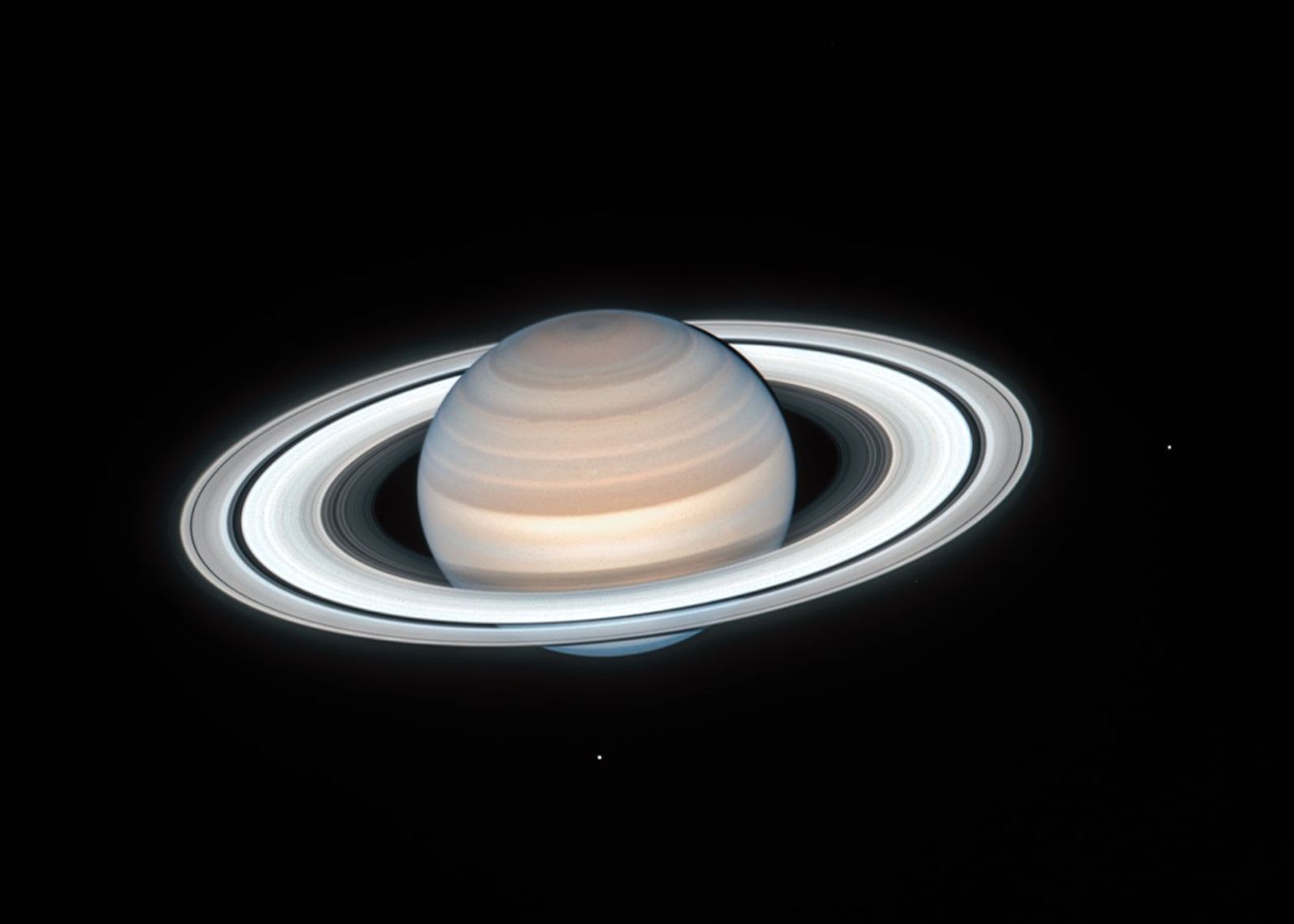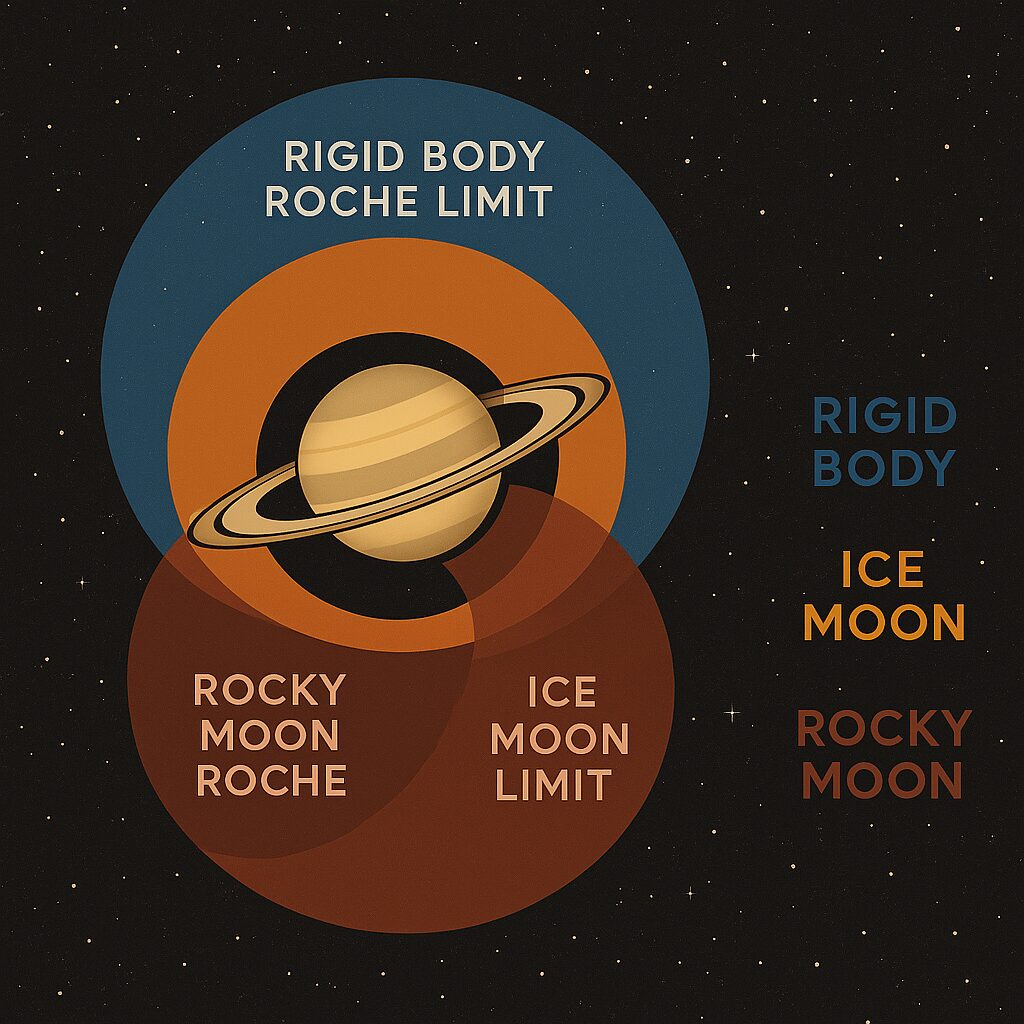I’m tucked indoors at midday, listening to the clock tick and the walls creak in the heat. The sun outside is merciless UV Index 9, which my weather app labels “very high” in that polite, understated way. In truth it’s dangerously high, the kind of sun that turns my front yard into an ultraviolet hazard zone. What the app should say is, “Emily, stay the fuck inside.”
So today I decided to simply stay in, watching a rectangle of white-hot light crawl across the floor of my creative studio. There’s a paradoxical quiet to this bright hour: the world out there is humming (I can hear a distant lawnmower), yet I feel like I’m in a pocket of stillness, a sort of personal eclipse. It’s just me, a cup of rapidly cooling coffee, and dust motes swirling lazily where the sunlight sneaks in. Stuck in this artificial dusk, I find my mind wandering to places it finds refuge—and today, that place is Saturn.
I’ll admit, being forced to avoid the sun at noon feels almost ironic. Usually I’m the girl who worships every ray of Vermont sunshine, working outside until my nails are black with tractor grease and garden soil. When I’m denied the open air, I start craving the night sky instead. I catch myself fantasizing about the moment dusk arrives, when I can step outside without fear of frying, tilt my head up, and see the first stars emerge.

Saturn has always been my favorite planet. Earth is cool—I mean, that’s where Vermont is located, but Saturn has a personality and style that captivate me. There’s just something about the way Saturn wears its rings: effortlessly, with a kind of regal flamboyance. It’s the grand old eccentric of our solar system, enormous yet somehow elegant. I often imagine Saturn as a genteel host at a cosmic gala, draped in shimmering rings like jewelry and surrounded by a crowd of moons. Its very look sets it apart. While other planets have rings too, Saturn’s are the wide, unmistakable show-stoppers. Those broad bands of ice and dust catch the sunlight and declare “I’m special” in a way that makes my heart swell. Maybe I identify with Saturn’s flair for standing out. Or maybe I just love the poetry of it—a massive gas giant, lighter than water, encircled by billions of glinting shards. Saturn is a planet that celebrates being a planet. And in the quiet of my living room, bathed in stray sunbeams, I find myself celebrating Saturn in return.
This afternoon, I keep circling back to Saturn’s rings in my mind’s eye. I’ve known since I was a kid that those rings didn’t magically appear as decoration; they’re there because of physics—and a little bit of drama. Ages ago, my asshole father took me to visit Cornell University where he attended college. He was flat-out determined to get me enrolled there, and brought me to his college reunions, many decades after he graduated. I was taken by the stars as a child, and asked my dad to find out if I could visit the observatory. To my surprise, he granted this wish, which was one of the most amazing things he had ever done for me. I found the observatory utterly fascinating. Because my father had pulled strings, he was able to have the staff aim the telescope at the night sky and allowed me to observe Saturn. I was six years old at the time. Come to think of it, that was probably the only amazing thing he had ever done for me.
There’s a concept I learned about (likely while devouring some astronomy book one rainy evening) called the Roche limit. It’s essentially the invisible line around a planet that marks the point of no return for any moon that strays too near. Inside that limit, the planet’s tidal pull becomes destructive—it will literally tear a satellite apart, shredding it into rubble that can end up as rings. Outside that limit, a moon can orbit safely, maybe even coalesce from smaller bits; but inside, all bets are off. Saturn’s rings today sit snugly within that boundary, a sparkling graveyard of what might have been a moon. I’ve always found that fact equal parts haunting and beautiful: haunting, because it means something broke apart to give Saturn its beauty, and beautiful, because in rare cases, beauty can come from destruction.
I sat on my couch this afternoon thinking about how the Roche limit isn’t one single fixed distance. It shifts, depending on the nature of the moon in question. Gravity is a bit of a tailor: it treats a rigid, rocky moon differently from a squishy or icy one. The exact break-up distance depends on Saturn’s mass and the moon’s own density and cohesion. A dense, sturdy moon such as one made mostly of rock and metal can venture closer to Saturn before feeling the fatal tug. A light, icy moon or a loosely bound rubble-pile will get torn apart from much farther away.
A small solid moon might survive skimming along just outside Saturn’s cloud tops, whereas a fluffy iceball would disintegrate long before it got that near. And something barely held together—say a comet that’s more dust than stone—might be doomed at an even greater distance. These thresholds aren’t neatly separated, either; they blur into each other. I thought about it in terms of zones of vulnerability, each one a halo around Saturn where a particular kind of moon would meet its demise. One zone for rigid moons, another for fragile ones, another for icy vs. rocky compositions—all intermingling in a concentric collage. In my mind I see them as gentle, translucent rings of different colors, layered on top of one another.
It’s almost like a Venn diagram drawn in space, centered on Saturn. The overlaps are the places where, say, a weaker moon would break up but a stronger one might hold on a little longer. The whole idea arrived in my head unbidden, and it absolutely delights me. Leave it to Saturn to make even orbital mechanics feel like an art project.
I’ll confess, the moment this mental image hit me—Saturn surrounded by a Venn diagram of Roche limits—I laughed out loud. Here I am, hiding from the midday sun, daydreaming about tidal forces and broken moons. It’s such a wonderfully nerdy thing to amuse oneself with.










Leave a Reply to Amelia Desertsong Cancel reply